Hey so 2 years ago I bought an Avid Mbox that came with Pro Tools. It's this one- http://www.proaudio.com/images/Avid_MBox.jpg
OK, fast forward to now- I recently got a UA LA-610 and tried to rig it up to the Mbox the other day for a recording session. It was my first attempt at recording bass with the new LA-610. We plugged the bass direct into the Hi-Z input on the LA-610, then went line out of the LA-610 into the MBox (XLR to XLR), and for the life of me could not get a nice clean track with healthy sound Waveswithout clipping every 2 seconds. We somehow managed to get enough tracks so I could salvage the parts that weren't clipping, and it sounds pretty decent now that I've edited the ever living sh*t out of it. But thats ridiculous...
Is my problem I'm retarded? Or is it time for me to upgrade to a better interface?
Comments
It's handy to know that microphones put a very very low output s
It's handy to know that microphones put a very very low output signals. And their output is generally around -50 db, average. The preamp picks up that tiny voltage and boosts it by 50+ db. What comes out of that preamp is a signal that averages between 50 to 70 db too high to plug into any other microphone input amplifier a.k.a. preamp.
So what are the options? Well first thing, one option that doesn't work, is to merely turn that microphone preamp way down. And while you're signal level might be in the proper range, amplifier noise and hiss will drive you out of your gourd.
As Kurt suggested, you'll need a male XLR to 1/4 inch, TRS (tip ring and sleeve). You can make one or you can pick them up at your local music store generally. Now that input is also not necessarily designed for high output level sources. Its primary intention is the medium-low level signal coming out of passive guitar pickups and electronic keyboards. And your 610 will still be outputting 20 to 30 db higher/hotter output levels, that still might overload that input? But you'll be closer in the ballpark and should be able to even things out. You might have to turn down the output level on the 610 a wee tad? Or the trim gain on the computer audio interface slowly down? And you should be good to go then.
This all comes under something very important and very fundamental we call " gain staging ". It is the most fundamental starting point of any recording scenario. This is where you are optimizing each device so as to have proper low noise floors, hardy output levels with plenty of headroom. On the receiving side, you sure as heck are not going to need much amplification from the computer audio interface, if any. And that will optimize its capable head room and associated lower noise floor noise. And all of the amplifiers are happy because they are working in their optimal way also making them quite stable. So this is basically bathroom 101 for the toddler.
The rest is all left up to your mixing style and technique. Unfortunately, with all of this wonderful software, the desire to play with all of the gobbledygook, gets real tired sounding. So when you don't have to rely on the gobbledygook for a good performance, you are truly delivering your talent and enjoyment to those of others. It ain't all about the EQ, dynamics processing, enhancers, plug-ins, reverbs. It's about the balance, the mix, the whole kit and caboodle.
So all my tracks get pushed up raw and I go for a feel, and talent, & a performance. And then I might start tweaking around with some EQ. I don't like to do anything radical unless it is for an effect. But you do use it to create some sparkle and some zing. You enable high pass filtering on most everything. You make the mix sound tight, punchy with as much clarity and definition as you can shoot for. Don't add too many gimmicky effects and plug-ins. People are just trashing otherwise good recordings because they're playing with too much stupid gobbledygook. There is no reason to be playing with most of this junk. Because it's more about the balance that is the junk. But children have this need to play by themselves and with themselves so... just don't go blind.
Dr. Howard Dr. fine Dr. Howard
Mx. Remy Ann David
Kurt Foster, post: 401369 wrote: the XLR is mic level .... try a
Kurt Foster, post: 401369 wrote: the XLR is mic level .... try a 1/4" trs plug and be sure you have selected the line in ...
OK, just did a bass session and its still clipping like crazy. I'm getting random spikes (especially on the low notes).
I went from the "line out" of the LA-610 using a XLR to 1/4" cable (not sure if it was TRS?) into the 1/4" "line-in" on the Mbox. Does this look right?
First, yes, you are now connected properly to the mbox. Next, y
First, yes, you are now connected properly to the mbox.
Next, your I/O paths in Pro Tools are the problem. Don't feel too bad about this, mine are always screwed up too as I am always switching between several interfaces. Every once in awhile, you've got to clean them up or you will get really confused.
But, before you do anything in Pro Tools, go to your computer control panel and make sure that the mbox is selected as both the recording and playback device. It looks like you might have selected an Eleven R at some point.
OK, once you have that correct, launch Pro Tools. Don't open a session at this time. Open the setup menu & select I/O. It should display mbox and only mbox. First look at the Input tab. You should see a nice stairstep of first the analog inputs and finally the digital inputs. You want to associate input 1 with analog 1, input 2 with analog 2, etc. If it shows things like re-amping or mic input that are left over from an Eleven, get rid of them by highlighting them and clicking on Delete Path.
NOW, VERY IMPORTANT: Look at the box labeled, "Sessions overwrite current I/O Setup when opened." Make sure that this box is NOT checked!!!
Next, do the same for the outputs and the bus tabs. These probably have nothing to do with your problem as it is primarily outputs, but just for neatness clean up anything that doesn't make simple sense.
IHTH
Thanks for your help! I couldn't make any changes to the I/O set
Thanks for your help! I couldn't make any changes to the I/O settings unless I opened a session because whenever ProTools launches, none of the drop down menus allow you to click on anything. Not sure what to do about that??
Also, this is what my input tab looks like-
I figured out how to associate the line-in "L" with Analog Input 1, and line-in R with Analog Input 2 and so on. But I'm confused because if I delete all of these paths all together and create new paths and name them analog 1, analog 2 etc, how does it know whether you want the path to be a line-in path or a mic-in path??
And I don't see the box labeled "Sessions overwrite current I/O Setup when opened".
I'm a little concerned about that XLR output from your 610 to th
I'm a little concerned about that XLR output from your 610 to the 1/4 inch TRS or, TS? It would be normal to have the 3 pin XLR match up to the 1/4 inch TRS connector. They both have three connections. But the line input/instrument input, probably wants to see a mono 1/4 inch TS connector and not the balanced TRS? Now I've got an M. box 2 and I've had problems trying to feed a similar output to your 610, into the line input on my M. box 2. And it will not work worth a damn without severe clipping, with or without a balanced or unbalanced 1/4 inch TRS or TS. And that's coming from the transformer balanced outputs from my Neve or from my API's. Doesn't matter. It doesn't like it one bit much less 16 or 24. At first I thought the problem was my ground was floating? It wasn't that. It's just a piece of crap M-Box 2. And it will not provide you with a schematic of their proprietary abortion input and encourage you to send it over to the guys at Black Lion Audio to have it modified and improved. And that's what I got from the folks over at Avid, face to face, in person. Which is one of the primary reasons why I don't use Pro tools and that unit much more than a dozen times in all the years I have owned it. Now some of their products are better than others and I believe M Berry has one of their better input designed units? So he really doesn't know the horror you are currently experiencing LOL. I do however and might recommend this:
The input sections of these devices no matter whether they have been wired better on the better models or not, are frequently feeding your line level signal, through the same amplification circuit's as the microphone preamp. And so while their microphone preamps are nothing to write home about, you might be better served by getting yourself a SHURE -50 DB, XLR line to microphone pad. So it's XLR going in and XLR coming out. And you plug that into the XLR microphone inputs on your M-Box. It won't kill the quality of the 610. It turns the microphone preamp into really nothing more than a buffer amplifier. And your 610 will output enough signal level so that microphone preamp noise from the M-Box should not be any problem whatsoever. At least not enough to talk about here. And that might be a better fix for your interface issue? Not that I don't highly regard everything that Mike has suggested and indicated. I just got rather indignant myself over realizing that was the only possible fix for the interface to work well with. But I think because of their poor front end design philosophy and/or concepts, it only proves why they are on the way out. Bye-bye as John McLaughlin would say. No not the guitar player.
Yeah yup you know something's wrong, When a crappy box only costs $450 with a $300 plus software bundle and they are " proprietary ", designs... you know somebody was taking LSD. Proprietary my ass and they sound like it like the gas my ass passes. And that's not a course but a design concept. I mean I have as yet to meet a $50 proprietary microphone preamp I liked. Especially when I generally use those non-proprietary $600-$1200 per channel preamps that don't care if you stick a low-level ribbon microphone into them or a line level feed into the microphone preamp input and in turn lead into gold. So they want you to think that their proprietary preamp is like the secret recipe behind the API 2520 operational amplifier. It doesn't even come close. A single 5534 IC chip does a better job. And that's only 3 1/2 bucks. So dad gum it, it's a piece of BS I'm sorry to say.
But if you're feeling frisky with a soldering iron, might I suggest you open the box and trace out all of the circuitry. You don't even have to know anything about it. Microphones go into transistors that go into chips that go through a couple of switches that go to a couple of more chips and a couple of more switches and another couple of chips. And the root out isn't much different but it certainly simpler. And once you locate the input to the actual analog to digital converter chip, you cut it clean from the rest of their horrid fraudulent circuitry. Take note though, you still might need a pad of 20-30 DB before going into that analog to digital converter chip? In other words, the input to that little chip also probably does not want to see a full-blown studio line level output. Your unit can exceed a staggering +28 across a low impedance 600 ohm load where most inputs today are 10,000-20,000 ohms so it might exceed +28 up to even +32? And the output transformer does not care if you unbalance the output transformer. But Mr. Ground Loop will be waiting for you. Which may force you to screw around with your audio and/or electrical plugs. So you might need some ground pin bypass adapters. And maybe you'll get something better sounding that way? And as far as those Avid bastards go, I think you need to remove the M, from the Box? Or, if you want to stick with ProTools, just upgrade to ProTools 10 or is that 11? And then you can run anybody's decent input hardware circuitry. And that's your computer audio interfaces and you won't be locked into that piece of Avid crap. And it will make somebody very happy that doesn't have a 610 to plug into it.
The problem really lies in the fact that it's an instrument input and not a true studio line level input. No, it's more like a consumer cassette deck line output level is all that it can contend with without clipping. While that's still considered line level it sure ain't peaks of +28. And those line level inputs are really misleading with that kind of nomenclature. Nomenclature, pretty good word for a high school dropout to use don't ya think? And perhaps I did not even use it correctly because I am an audio engineer? Nevertheless, I have my doubts Mike's suggestions will actually improve your recordings? He certainly gave you a better grasp of how to deal with your computer and with ProTools. Most definitely.No doubt about that.
It's just irritating to find out that you really have to knock the output level down on that 610 by about 20 db, before those line level inputs are going to work out without clipping. And that does not come from turning the output volume control down on the 610. It requires what we refer to as an H resistive pad. Because the resisters look like an H. And it's a balanced pad. And even if that line level input does not accept balanced line level sources, you can still unbalance after the pad and before the inputs on the Mother Box.
Think Watergate. That's the John McLaughlin I worked with since 1981. Still do, on the side. He's a client of mine.
Mx. Remy Ann David
Remy, you've helped me tremendously over the last year or so and
Remy, you've helped me tremendously over the last year or so and I really appreciate it. It really shows in my recordings. Just wanted to say thanks for that.
I've been thinking about upgrading to an Apogee Duet + ProTools 10. Do you guys think that would fix the problem?? (I'm not too confident in my soldering abilities)
Can the Apogee handle the output level from the LA-610 and do it some justice? I'm going to be recording several vocal sessions soon. I've got the U87 and the LA-610 ready to go but I'm not feeling too good about this clipping situation though...
Thank you very much. I'm glad I've been of some kind of smart as
Thank you very much. I'm glad I've been of some kind of smart ass help? It gives me a great feeling of internal accomplishment and satisfaction, when I can help someone make a better recording that they can be proud of. I have never been able to experience first-hand what it's like to be a parent. I was extremely career-oriented. Plus who the heck wants to grow up and have to be responsible? Certainly not myself. And it shows. I'm 57 and I have no gray hair. I'm not digging the chicken neck and cheek jowl thing. It's like a drooping frequency response with some extra distortion looking at myself in the mirror these days. So I like looking at meters a lot better. I would have to sell both of my 67's & 87's just to look 10 years younger. And then I can feign ignorance about not knowing anything about those models. Because the over 50s stuff for a woman, sucks if you're not married to a plastic surgeon.
So my choice is... tell everyone I've grown old along with this console, my Neve, while looking as old as it? Or? Get the facelift, look younger and tell everybody how proud I am of this state of the art digital console? The decision should be easy? I need a date!
I think we can all agree to agree that we know that Apogee makes some fine stuff... but only for mackintosh. And it's not yet Thunderbolt ready I don't think? Maybe it will be there at the October AES in NYC? So honestly, right now, I'm also personally hesitant to go after any FireWire devices of any kind, anymore. And also because of some of the Macintosh issues of over simplification and the dummy down of everything has people wondering about Macintosh? Everybody that was using Final Cut Pro, ain't using it anymore. Adobe and Sony are starting to port over to Macintosh again. But what's going on with their computers today? And maybe they are going to continue to support their original incarnation called FireWire? But I don't think so? So that's dead-end equipment. They aren't just phasing it out. It's already gone. Then perhaps so are those Blue Ray discs? Just like those MP 4 high definition DVD's that Toshiba came up with, so the DVD assembly line process would not require any investment in upgrading. And it flopped. So has DSD and SACD. They tested it. It works great. It sounds incredible. Looks incredible. But no greed and profit margin worthy enough for the shareholders. So ya have to be careful today more than ever before with these daily changing incremental technological advancements. You already have the right stuff, no doubt about that.
USB has been around the longest. 2.0 is more than adequate for our work and now we have 3.0 which is supposed to be 10 times faster à la Thunderbolt but for the PC. And then maybe we have to wait for the PC to catch up to Thunderbolt like it had two with FireWire? And this could influence your decision making in your choice of purchase? These lovely items are not cheap. And if you dig Macintosh, I'd look into one of those new Thunderbolt enabled devices also from those premium companies. I'm just personally not a big fan of cartoon looking operating systems. Makes me feel like a preadolescent. Been there. Done that. Don't want to go there again. And Linux isn't made for adults. It's only made for geeks. And it's not exactly catching on much. I can't even imagine having to use a melting ice cream sandwich operating system, all over my stupid phone? Yuck. Are they kidding? I feel like I'm entering my second childhood? I'm mmean my third or fourth whichever? Fifth sixth? Any who... Chris raves over his Lavery's. But I believe that's FireWire again? And it might be more likely to accept that studio line level beautiful signal on that Lavery versus the Duet? Now I have no experience with either. What I do know is that the Duet, is aimed more at the home recording enthusiast. While I think the Lavery is geared more toward studio operations. And thus have no problem accepting a peak input level of +28. The Duet might not like that hot of a signal on its line input? Remember, that was designed so you can plug your guitar directly in to it. And that's not necessarily indicative of an input being able to accept peaks of +28? Of course the Lavery and others like it hover around that same price as a new U87. But knowing Bob Clearmountain and knowing that his wife owns Apogee and he uses some older Apogee computer audio miniature interfaces because he liked the mic preamp better in the older unit than the improved mic preamp and things like that Duet. Go figure? But then Bob also loves the way his SSL 4000E sounds also from 1978. So how does everybody interpret that? It's the same reason for owning an 87 or a 610. It's generally a worthy investment that should last some years. Not designed for beginners. So Universal Audio is also making the Apollo? And that's Thunderbolt ready to go and from a great lineage. Or maybe I've got all of my information all mixed up? I think it's low blood sugar from dieting/fasting?
And who knows? They might come up with an interface to connect your Thunderbolt enabled professional audio interface devise to your iPhone/iPod? And then you won't even need the stupid laptop anymore. Nothing like pulling out your phone from your pocket to make a 24 track recording. Don't tell anybody about this. Then everybody will want this except us. And we'll be left out in the cold with no phone.
Maybe my Mental Rupert and I will grow old together? I can turn him on any time. And I know how to push his buttons.
Mx. Remy Ann David
The specs on that Mbox3 (not the Pro version) make strange readi
The specs on that Mbox3 (not the Pro version) make strange reading. The mic input (rear-panel XLR) has a gain range of 54dB with a max input of +4.2 dBu without the pad engaged and +24.2dBu with the pad. The line input (rear-panel TRS) has a fixed level of +4.2dBu with no pad option or gain range shown. The front panel instrument input has the mic's gain range of 54dB but with a max input of +16dBV with/without(?) the pad. These specs are totally screwy.
I would try the XLR input with the pad engaged (front-panel gain knob pulled out). Make sure the phantom power is turned off.
Boswell, post: 402062 wrote: These specs are totally screwy.
Boswell, post: 402062 wrote: These specs are totally screwy.
Yes. I own one of these (also a mbox3 pro & an Eleven R). It's not just the specs, the mic preamps are very short on gain and the line in & out levels are non-standard. Whoever designed these things never set foot in a recording studio or broadcast plant. They can get this right....my Eleven R has the normal interface levels...it must have been designed by someone other than the person who designed the mboxes. Also I do agree with Remy that the idea of padding down the line inputs to go through the preamps is something that I find abhorrent.
But, all of that said, it is possible to make excellent quality recordings with this box. It should not be obviously distorting. I recommend that you find out what is wrong before you throw money at anything.
Once you have your I/O table sorted out, I recommend that you diagnostically try a recording directly from your guitar through one of the instrument inputs on the front panel of the mbox. Those instrument inputs are correctly designed to work with a guitar pickup. That will eliminate the 610 & the cable as a possible cause of problems.
Also....and this is a long shot, I know......does your instrument have any active circuitry? I worked with an Epiphone guitar that had a battery-powered preamp built into it. It sounded excellent but a weak battery there would cause clipping.
Mike you'll love this. This person was a social acquaintance of
Mike you'll love this. This person was a social acquaintance of mine. She knew what I did, what I had and who I did things for. So she contracted me to record an album for her. She plays keyboards and guitar and learn how to program her midi stuff. Then she proudly brought out her 10-year-old, Paul Reed Smith electric bass guitar. Jesse tells me it's an active bass guitar. Then she told me the passive pickups were broken. I see? And when was the last time ya changed the battery?... Jesse looked at me in her typical dumbfounded way and said..." battery?" She had the guitar for 10 years. So I opened it and replaced the battery and now the passive pickups work again LOL. Later, Paul Reed Smith gave me a call. He now owns eight inputs from the Neve, in Control A, NBC-TV, DC. So a little bit of that Control A is over there near Wendy Rieger. I wish I was over there near Wendy Rieger. Mike do you remember her " special name "? I certainly could never verify that myself?
When I grow up... I want to be Wendy Rieger.
Mx. Remy Ann David



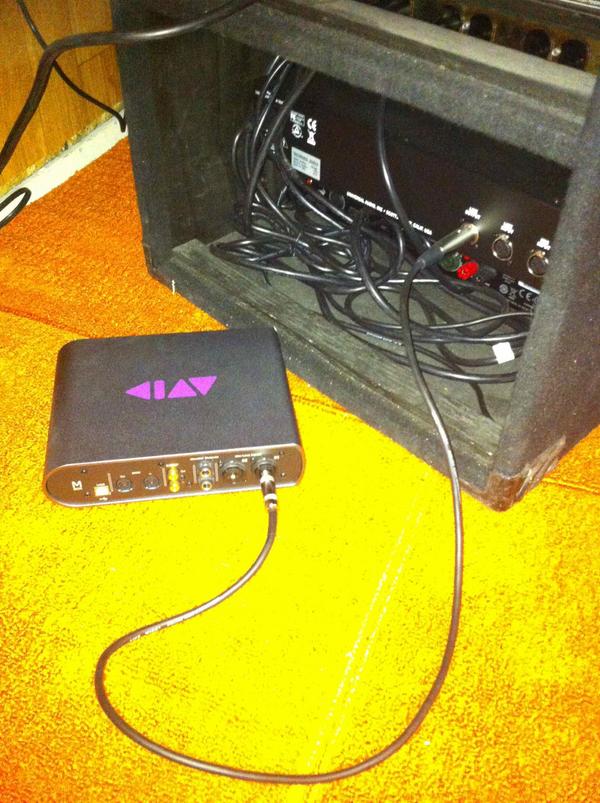
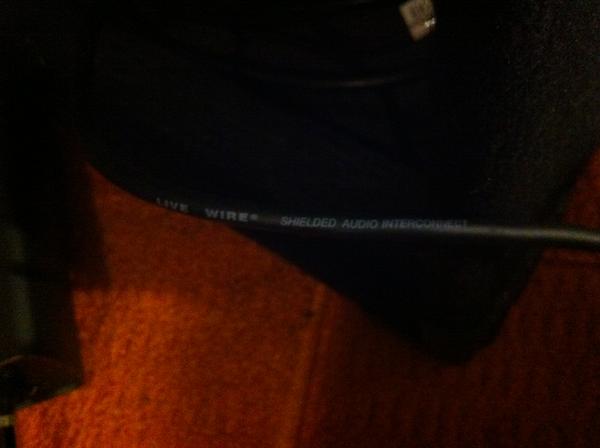
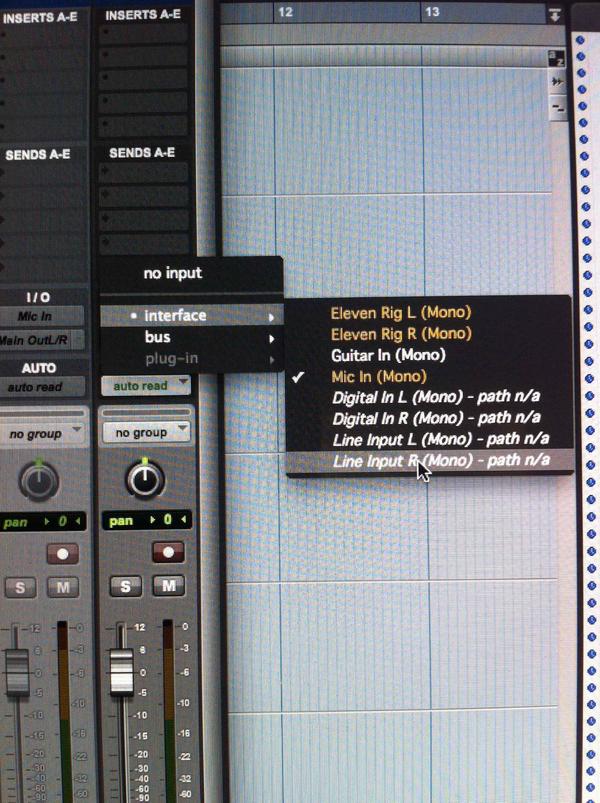
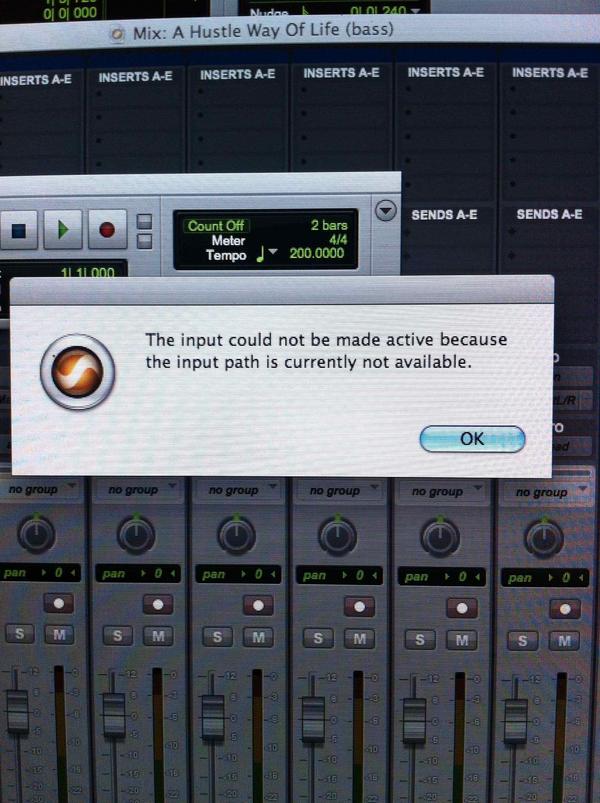


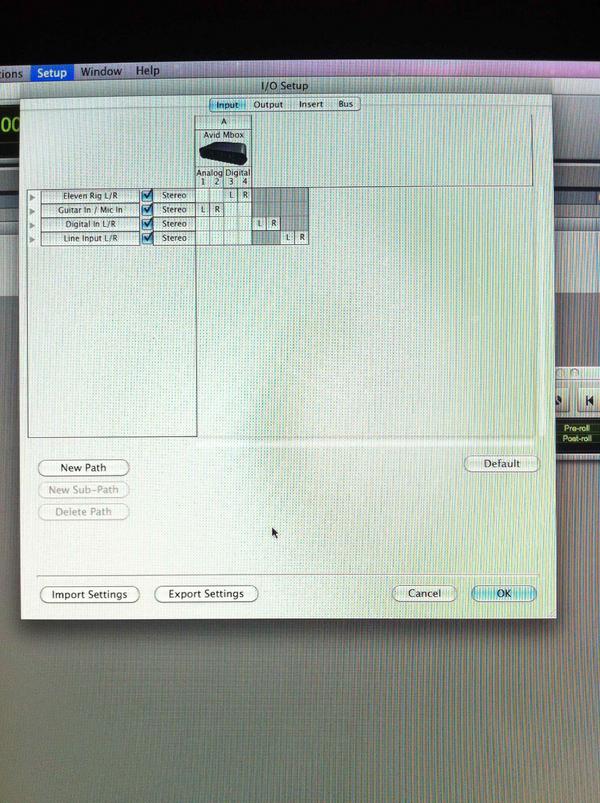

the XLR is mic level .... try a 1/4" trs plug and be sure you ha
the XLR is mic level .... try a 1/4" trs plug and be sure you have selected the line in ...